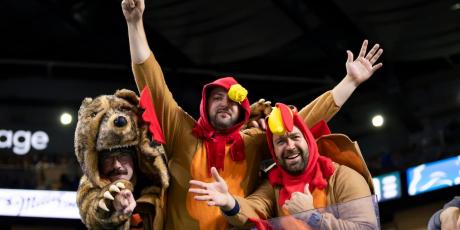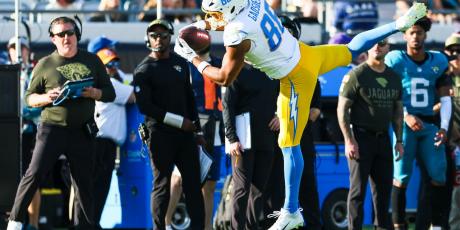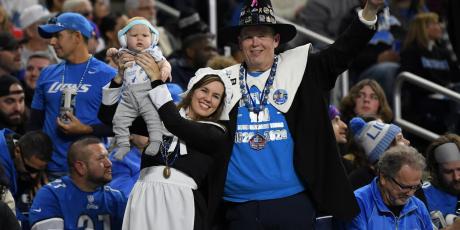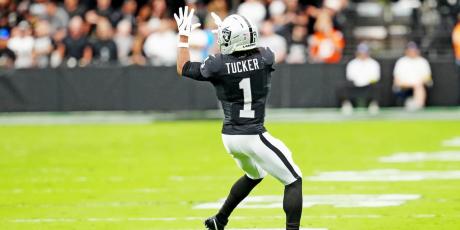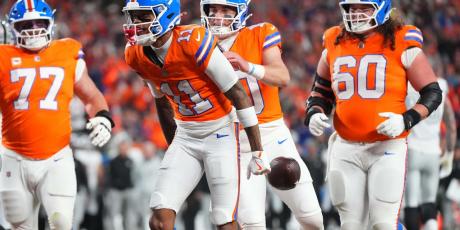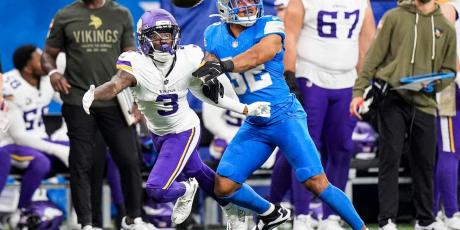Which Teams Invested in the Offensive Line in 2023?
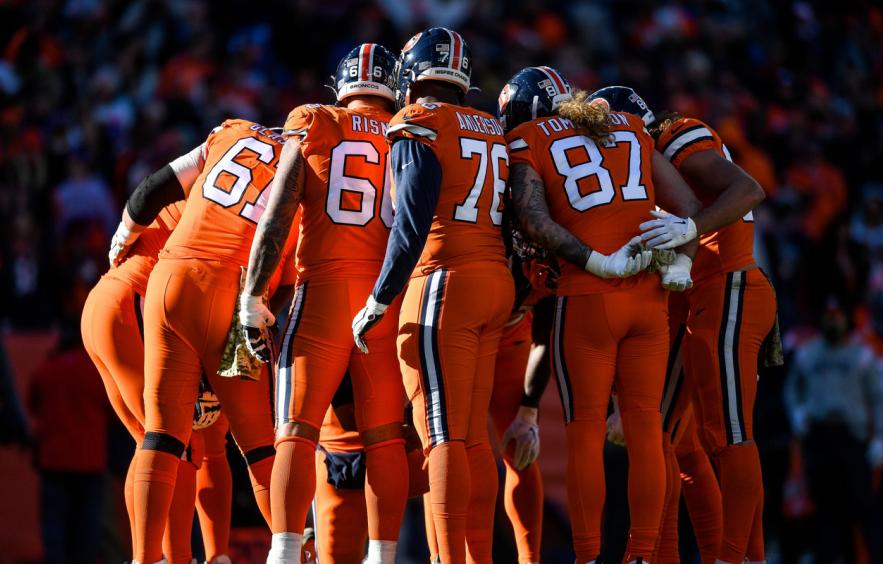
Every offseason, once the main part of free agency is over, I compile all the offensive line free agent signings to get a quantitative sense of which teams are investing in the trenches. One of the best measures of a player's value and ability is the contract that they sign, so I add up the average annual value for each team's free agents in (players the team signed) and free agents out (players signed away by other teams) to come up with a net dollar value (net $ in) for each team.
Note: I don’t think anyone else looks at free agency this way, but if they do, please let me know–I’d be interested to see their analysis.
A team with a large positive number means that they brought in significantly more talent than they lost, and the team should be better up front. Conversely, a team with a big negative number means that they lost significantly more talent than they brought in, and the team’s offensive line should be worse. Quality coaching, good drafting, and the development of younger players can offset losses in free agency.
More 2023 fantasy football content: How Offensive Line Play Impacts Fantasy Football | Do Players Perform Better in Contract Years | ADP Risers & Fallers | Rankings Breakdowns
2019-2022 Overview
Before we get into 2023 free agency, let’s take a look at the last four years and see how free agency and the draft have impacted offensive line play. To measure offensive line play, I’ll focus on Football Outsiders’ Adjusted Line Yards (ALY) and Adjusted Sack Rate (ASR), which focus on the running game and passing game, respectively.
Thirteen teams spent more than a net of $10 million in the last four seasons, and those teams saw their ALY increase by 10.2% with an average ranking improvement of 8.8 spots. Those units saw their ASR decrease by 2.0% (which is good) with an associated ranking improvement of 2.0 spots, on average. Nine of those 13 teams also drafted at least one lineman in the first three rounds.
The five teams that spent more than a net of $10 million in 2022 saw their ALY improve by 13.6% while their ASR increased by 0.5%.
The 25 teams that saw a net decrease in spending of $6 million or more saw their ALY decrease by an average of 4.8% with a rankings decline of 5.9 spots. (Not good.) This group saw their ASR increase by 12.7% (which is also bad) with an associated ranking decline of 1.0 spots.
The 11 teams that had a net decrease in offensive line spending of at least $6 million in 2022 saw their ASR increase by an average 22.9%! (Their ALY decreased by a mere 0.1%.)
What does this all mean?
Well, it’s not rocket science. There will be exceptions, but teams that spend on the offensive line see improvement in these metrics while teams that don’t will see a decline, on average.
It appears that spending on the offensive line affects ALY more than the team’s ASR, from a league-ranking standpoint, at least.
Below is the offensive line free agency table for 2023. I also included the number of draft picks used in the first three rounds on the offensive line to see which teams were using draft capital to shore it up.
| Team | Net # In | Net $ In | Rank | Drafted In First Three Rounds | Net Players In |
|---|---|---|---|---|---|
| DEN | 0 | $23,580,000 | 1 | 0 | 0 |
| CIN | 2 | $17,103,000 | 2 | 0 | 2 |
| WAS | 1 | $11,430,000 | 3 | 1 | 2 |
| PIT | 1 | $10,670,000 | 4 | 1 | 2 |
| BUF | 1 | $8,055,000 | 5 | 1 | 2 |
| NE | 1 | $7,420,000 | 6 | 0 | 1 |
| CHI | -1 | $3,990,000 | 7 | 1 | 0 |
| ARI | 2 | $3,970,000 | 8 | 1 | 3 |
| MIA | 1 | $3,082,500 | 9 | 0 | 1 |
| CAR | 1 | $1,770,000 | 10 | 0 | 1 |
| SEA | 0 | $1,145,000 | 11 | 0 | 0 |
| HOU | 1 | $642,500 | 12 | 1 | 2 |
| DET | 0 | $500,000 | 13 | 0 | 0 |
| LV | 0 | $85,000 | 14 | 0 | 0 |
| NO | 0 | $70,000 | 15 | 0 | 0 |
| JAX | 0 | $0 | 16 | 1 | 1 |
| MIN | 0 | $0 | 16 | 0 | 0 |
| GB | 0 | $0 | 16 | 0 | 0 |
| CLE | 1 | -$140,000 | 19 | 0 | 1 |
| TEN | -1 | -$398,333 | 20 | 1 | 0 |
| KC | 0 | -$1,023,000 | 21 | 1 | 1 |
| IND | -1 | -$1,130,000 | 22 | 0 | -1 |
| ATL | -1 | -$1,442,500 | 23 | 1 | 0 |
| LAR | -1 | -$1,770,000 | 24 | 1 | 0 |
| TB | -1 | -$1,817,500 | 25 | 1 | 0 |
| NYJ | 0 | -$2,605,000 | 26 | 1 | 1 |
| LAC | -2 | -$3,510,000 | 27 | 0 | -2 |
| DAL | 0 | -$6,217,500 | 28 | 0 | 0 |
| NYG | -1 | -$6,715,000 | 29 | 1 | 0 |
| BAL | -1 | -$13,525,000 | 30 | 0 | -1 |
| SF | 0 | -$16,870,000 | 31 | 0 | 0 |
| PHI | -2 | -$17,666,667 | 32 | 1 | -1 |
A Few Takeaways
I’ll provide some context below. After the team name, I’ll put the Football Outsiders ALY/ASR ranks in parenthesis. For certain players, I’ll mention their positional run/pass-blocking ranks per PFF. There were 89 eligible tackles, 85 eligible guards, and 39 eligible centers last year, based on at least 20% of the snaps played.
- In the five years that I’ve been tracking this data, no team has spent more in an offseason than the Denver Broncos (20th ALY/30th ASR) did this year. The net +$23.6 million was slightly more than the net +$23.1 million that the Bills spent in 2019. (The Bills improved their ALY by 11.3% and their ASR by 2.5% that season, by the way.) The Broncos spent the vast majority of those dollars on tackle Mike McGlinchey (27th rush/57th pass) and guard Ben Powers (69th/2nd). So, in McGlinchey, they got a good run-blocker and in Powers, they got a great pass-blocker.
-
The Bengals (16th/16th) led the league in 2022 free agency spending on the offensive line with +$20.6 million and they spend another net of +$17.1 million this year after adding tackle Orlando Brown (32nd/23rd). Last year, the Bengals enjoyed a 23.1% drop in their ASR, but all that spending didn’t pay off in the running game (+0.5% ALY). Joe Burrow should be well-protected in 2023.
-
The Commanders (23rd/23rd) shored up their offensive line by spending a net +$11.4 million adding tackle Andrew Wylie (52nd/68th) and guard Nick Gates (46th/29th). Washington also added third-round center, Ricky Stromberg.
-
The Steelers (10th/12th) continue to invest heavily in the offensive line. Last year, they spent the third-most (+$12.1 million) and this year they spent the fourth-most (+$10.7 million), adding guards Isaac Seumalo (17th/10th) and Nate Herbig (54th/56th). But perhaps the biggest addition is first-round tackle Broderick Jones, who should boost the line’s run- and pass-blocking. Pittsburgh’s commitment to its offensive line bodes well for Najee Harris.
-
Like the Bengals and the Steelers, the Bills (13th/7th) continue to invest in the offensive line, spending a net of +$6.0 million last year and another +$8.1 million this year. The primary free agent addition was guard Connor McGovern (79th/14th), who was better as a run-blocker in both 2020 and 2021 than that 2022 ranking would indicate. The Bills also added second-round guard O’Cyrus Torrence in the draft. ESPN called Torrence “one of the most dominant interior offensive linemen in the country last season.”
-
The Cardinals (27th/15th) added center Hjalte Froholdt (12th/36th), who should provide a boost in the running game. They also added tackle Dennis Daley (85th/83rd) for depth and guard Elijah Wilkinson (26th/25th). But the biggest addition will be Ohio State tackle Paris Johnson, whom they selected with the No. 6 overall pick. He should start immediately help the entire offense.
-
The Bears (11th/32nd) posted good ALY but the league-worst ASR, so they need pass protection. Guard Nate Davis (13th/40th) should help more in run-blocking, but is capable in pass-protection. Darnell Wright (No. 10 overall pick) should start immediately at right tackle, giving the Bears a rock-solid bookend opposite Braxton Jones. Chicago should be able to better protect Justin Fields this season.
-
The Eagles (6th/21st) had the biggest net loss (-$17.7 million) along the offensive line in 2023 free agency, losing both guard/tackle Andre Dillard and guard Isaac Seumalo (17th/10th). In fact, it was the most salary lost in the five years I’ve been collecting this data. Including the postseason, Dillard only played in seven games in 2022 but showed well as a pass-blocker. The Eagles drafted guard/tackle Tyler Steen in the third round to replace Seumalo. The Eagles’ offensive line should continue to be solid since they addressed their losses in the draft and have plenty of depth.
-
Once again, the 49ers (4th/10th) lost offensive line salary in free agency. After a net loss of -$15.6 million last year, they lost another $16.9 million this spring in the form of tackle Mike McGlinchey (27th rush/57th pass) and guard Daniel Brunskill (40th/19th). This unit’s loss of talent might start to sting unless the 49ers’ free agent signees, center Jon Feliciano (32nd/18th), and guard/tackle Matt Pryor (79th/87th) can exceed expectations (or younger players step up).
-
The Ravens (21st/22nd) lost guard Ben Powers (69th/2nd) and didn’t draft a lineman in the first three rounds. Baltimore has depth along the line, so the Ravens should be fine.


